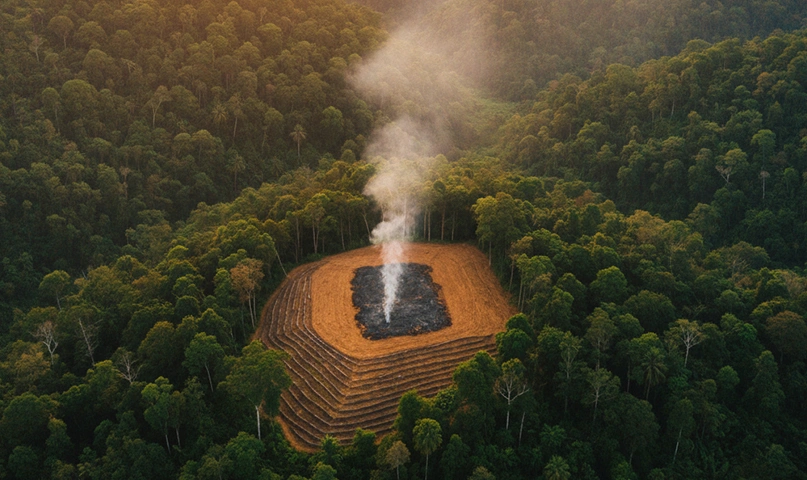Pearl Farming in India – Benefits, Process & Profits
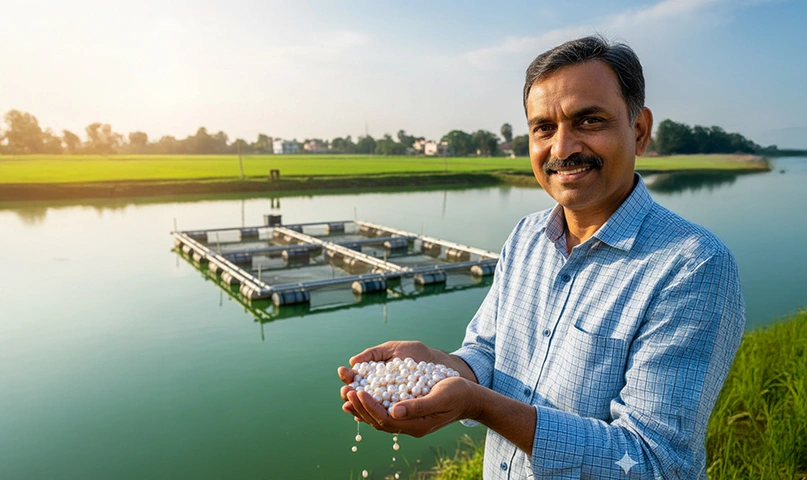
Pearl farming, also known as pearl culture or aquaculture, is quickly becoming one of the most promising sectors in Indian agriculture. Unlike traditional farming practices that often require high land investment and are subject to weather uncertainties, pearl farming stands out for its low investment, high return, and consistent demand in both domestic and international markets.
The numbers speak for themselves. In 2022, India exported pearls worth $3.79 million, ranking 19th in the world’s pearl exporters list. Farmers can expect returns of 50–60% on their investment, with the potential to double profits with the right training and technology.
In this detailed blog, we’ll explore everything you need to know about pearl farming in India in 2025:
- What pearl farming is
- Its benefits and advantages
- Step-by-step guide to starting a pearl farm
- Required training and institutes
- Subsidies, licences, and government schemes
- Cost and profit analysis
- How to even try pearl farming at home
Let’s dive right in.
What is Pearl Farming in India?
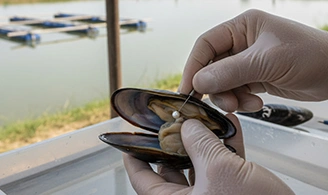
Pearl farming is the practice of cultivating pearls inside oysters or mussels under controlled conditions. Farmers insert a foreign object (nucleus) into the oyster, which irritates it. In response, the oyster secretes layers of nacre, which eventually form a pearl.
This is different from naturally occurring pearls, which are extremely rare. Today, 99% of pearls sold worldwide are cultured pearls, making pearl farming a practical and profitable business.
In India, pearl farming is primarily done in freshwater ponds and tanks, though coastal states are exploring marine pearl culture as well. States like Odisha, Bihar, Jharkhand, and Uttar Pradesh are emerging hubs, while Tamil Nadu has made progress in marine pearl production.
Read Also: Types of farming in India – Factors, Techniques & Importance
Benefits of Pearl Farming – Why It’s a Great Business

Pearl farming is not just about producing beautiful gems. It’s also a sustainable and eco-friendly business model that offers several advantages over conventional farming.
1. High Market Value
Pearls enjoy strong demand across industries—jewellery, cosmetics, garments, and even medicine. Their prices are stable compared to gold or silver.
- Freshwater cultured pearls: ~₹280 per gram
- Saltwater cultured pearls: ~₹6,000 per gram
This price difference allows farmers to choose their niche based on investment and resources.
2. Easy Maintenance & Storage
Unlike fruits or vegetables, pearls are non-perishable. Once harvested, they can be stored for years without losing value. This flexibility allows farmers to wait for the best market prices.
3. Low Labour Requirement, High Employability
Pearl farming requires structured steps and limited manpower, which reduces costs. At the same time, it creates opportunities for skilled jobs like grafting technicians and aquaculture experts.
4. Low Setup Costs
Initial investment is minimal compared to other agri-businesses. With ₹20,000–₹25,000, you can begin on a small scale and expand as profits grow.
Pearl Farming in India – Tools and Training

While pearl farming is profitable, it requires technical skill and training. The Central Institute of Freshwater Aquaculture (CIFA) under ICAR conducts training sessions nationwide.
Here are some leading institutes for pearl farming training in India:
|
Training Centre |
Location |
Duration |
|
Marathwada Pearl Culture & Training Centre |
Aurangabad |
Short-term |
|
Freshwater Pearl Farming Institute |
Jaipur |
6 weeks |
|
Wizard Pearl Farming Centre |
Haryana |
2 days |
|
Swastik Pearls Farming & Training |
Uttar Pradesh |
10–15 days |
|
Krishi Vigyan Kendra |
Madhya Pradesh |
Varies |
|
Pearl Farming Training & Research |
Alwar, Rajasthan |
N/A |
These centres teach farmers grafting, oyster care, water quality management, and marketing strategies.
Read Also: Top 7 Powerful Mahindra tractors for farming in India
How to Start Pearl Farming in India: Step-by-Step Guide

Starting pearl farming requires patience and planning. Here’s a simplified roadmap:
Step 1: Site Selection & Water Testing
Choose a pond, tank, or coastal area. The water must meet quality standards, tested through CIFA-approved labs.
Step 2: Obtaining Oyster Stock
- Spat Collection: Collect larvae (spat) that are ideal for grafting.
- Hatchery Production: Buy spat from hatcheries if available.
- Adult Oysters: Direct collection, though riskier due to higher mortality.
Step 3: Drill & Hang Oysters
Oysters are hung in chaplets (string garlands) or placed in net containers in water for better growth.
Step 4: Grafting Process
Insert a nucleus (often a bead or shell fragment) into the oyster tissue. This initiates pearl formation.
Step 5: Pearl Development
The oyster secretes nacre, coating the nucleus over 12–24 months. Farmers must carefully maintain water conditions and protect oysters from disease.
Step 6: Harvest & Marketing
After 1–2 years, oysters are harvested. Pearls are sold to jewellers, cosmetic companies, or exported. Branding and direct-to-market sales fetch higher prices.
Pearl Farming Profits and Cost Analysis

Initial Costs
- Oyster price: ₹20–30 each
- Farm setup: ₹20,000–25,000
- Additional equipment: boats, nets, grafting tools, SCUBA gear
- Fees to experts, marketing expenses, licensing costs, grafting technician costs
Returns
- Pearl price: ₹300–1,500 per piece (size 1–20 mm)
- With proper training, income can reach ₹3,00,000 from ₹25,000 investment.
- ROI: 50–60%, with potential for 100% in advanced farms.
Example:
For 10,000 oysters (stocking density in ¾ acre pond):
- Investment: ~₹2.5–3 lakh
- Expected yield: 6,000–7,000 pearls (accounting for mortality)
- Income: ₹18–25 lakh (depending on pearl quality)
|
Cost and revenue assumptions for pearl farming |
Location |
|
Cost of mussel holding tanks |
Rs. 40000 |
|
Bamboo and ropes cost |
Rs. 45000 |
|
Lease amount of cultured pond |
Rs. 20000 |
|
Mussels surgical sets costs |
Rs. 25000 |
|
Pearl Nuclei Cost |
Rs. 1,10,000 |
|
Cost of skilled labour |
Rs. 60000 |
|
Cost of pond, liming, fertilization etc |
Rs. 35000 |
|
Post harvests and processing costs |
Rs. 20000 |
|
Total cost of project |
Rs. 3,98,000 |
Subsidies, Licences, and Support
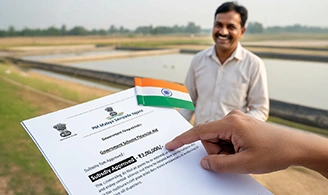
Government Subsidy
Under the Blue Revolution Scheme, the government offers 50% subsidy for setting up pearl ponds. With just ₹25,000 investment, farmers can potentially earn up to ₹3 lakh.
Eligibility, Documents & Applying Process for Pearl Farming Subsidy

The applicant must be an Indian citizen and a farmer by occupation. He/she must have acquired knowledge through pearl farming training in India.
Following are the documents important for subsidy application for Subsidy:
- Domicile Certificate
- Category Certificate
- Aadhaar Card
- Bank Account Details
- Pond area and farming details
- Passport size photographs
Licences Required

- Permission from fisherman’s cooperative society
- Certification from CIFA
- GST registration for commercial trade
- Land or pond lease agreements
Government Schemes for Pearl Farming
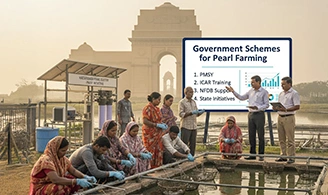
The Indian government actively supports pearl farming through multiple programs:
1. Pradhan Mantri Matsya Sampada Yojana (PMMSY)
- Approved 2,307 pearl cultivation units worth ₹461 lakh
- Provides training, subsidies, and infrastructure
- Promotes pearl clusters like Hazaribagh, Jharkhand
2. ICAR Training Programs
- Hands-on workshops on grafting, oyster care, and harvesting
- Introduced 1.65 crore pearl oyster seeds in Tamil Nadu for marine pearl farming
3. NFDB Support
- Offers financial aid, infrastructure support, and technical guidance
- Helps farmers access markets nationally and globally
4. State-Level Initiatives
- Rajasthan: Subsidies and training after 2015 ICAR-CIFA programs
- Jharkhand: India’s first pearl farming cluster in Hazaribagh
- Bihar & Uttarakhand: Funded pond construction and oyster distribution
Pearl Farming at Home
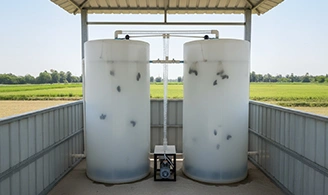
Pearl farming can also be done on a small scale at home using the Recirculating Aquaculture System (RAS).
Setup:
- Two fish tanks placed vertically
- Air pump for water circulation
- Tank dimensions: 3 ft × 2.5 ft × 1.5 ft (holds ~50 mussels)
- Initial investment: ₹20,000
This method is ideal for hobbyists or small entrepreneurs before scaling to commercial farming.
Challenges in Pearl Farming

While profitable, pearl farming has its challenges:
- Long wait time (12–24 months for pearls)
- High mortality rate in oysters if not cared for properly
- Need for skilled grafting technicians
- Market fluctuations depending on pearl quality and global demand
With training and government support, however, these challenges can be managed effectively.
The Future of Pearl Farming in India

With increasing global demand for eco-friendly and sustainable jewellery, India has the potential to become a global leader in pearl exports. Rising support from startups, government schemes, and training centres is helping small and marginal farmers adopt this business.
Pearl farming also complements fish farming, allowing farmers to diversify income sources. As awareness spreads, more rural entrepreneurs are expected to enter the sector.
Conclusion
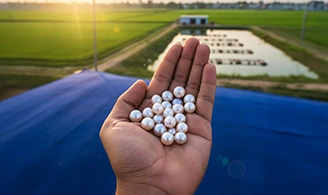
Pearl farming in India is no longer just a niche activity—it is an emerging profitable agribusiness with massive potential. With low investment, minimal maintenance, and guaranteed demand, it is one of the best opportunities for farmers and entrepreneurs in 2025.
The key lies in:
- Getting the right training
- Choosing proper oyster stock
- Leveraging government subsidies and schemes
- Building marketing networks
With patience and dedication, pearl farming can yield 50–100% returns and create a sustainable source of livelihood for rural India.










